This is a story of serendipity. Of how an out-of-the-blue email request, about an article I had written over two decades ago, led me to rediscovering authors, books and ideas that I had first encountered back in my high-school days in India and have been deeply influential in making me the person I am today.
Serendipity: An unintended and unexpected, but wonderful, discovery or learning experience that happens accidentally.
I have always been interested in the visual representation of ideas. I love reading about the psychology of visual perception and playing with optical / visual illusions. These interests overlap with my interest in science and education. Many years ago, when I was in graduate school, I wrote a paper in which I brought together these interests that ended up as a publication (titled: The role of abstraction in scientific illustration, complete citation at the end of this post) in the Journal of Visual Literacy. It was later selected to be included in a source-book on visual rhetoric.
This is a paper I am quite proud of, mainly because it synthesized a wide swath of research literature across domains that typically are not seen together. To be fair, the overall topic is somewhat outside of my professional interest and expertise, which is why I really haven’t followed on those topics.
And that paper was published in the last century – back in 1999, 23 years ago! And to be honest, it was not something that I spend much time on these days.
Till, a few weeks back, I received an email from Kim Marriott, professor and head of department of Human-Centered Computing at Monash University in Australia.
Subject: Request for information about some images in an early paper of yours
Dear Punya,
I am writing a popular science book about the history of data visualisation and wanted to include a short discussion of the history and evolution of electrical circuit diagrams. I have found almost nothing on this except in one of your early papers “The Role of Abstraction in Scientific Illustration: Implications for Pedagogy”. Figure 2 has some images of the Wheatstone bridge (from 1888, 1890 and 1898). I know it is a long shot but do you remember where these came images came from?
Thanks for your time
Cheers
KIM MARRIOTT
Professor & Head of Department of Human-Centred Computing
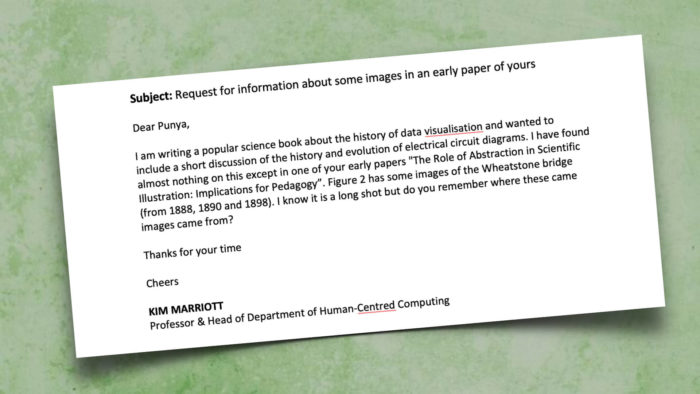
Wow! That was a blast from the past.
Given that I had not paid any thought to this article in years (decades), I was not sure how I could respond to Dr. Marriott’s request. Where would I even begin? And why the heck did I not include the references the first time around? (Bad academic, Punya!). I had no idea where to even start looking.
A first pass, through my website led to a somewhat tongue-in-cheek blog post from back in 2008, which referenced the article, but provided no help in answering Dr. Marriott’s question.
Side note I: The tongue-in-cheek blog post mentioned above (titled The degradation of Matt) is one of my favorite posts of all time. It is a rumination on goofy sketches of my colleague Matt Koehler, the ways in which information degrades when copied over and over again, a B-list Hollywood movie, botany textbooks I read when in high school, all, in some strange way, leading up to some thoughts on the history of scientific illustration. Yes, a strange package indeed. But one I had fun writing, and well worth a read, if I say so myself.
So, this email just sat there in my inbox as I figured out what I should do.
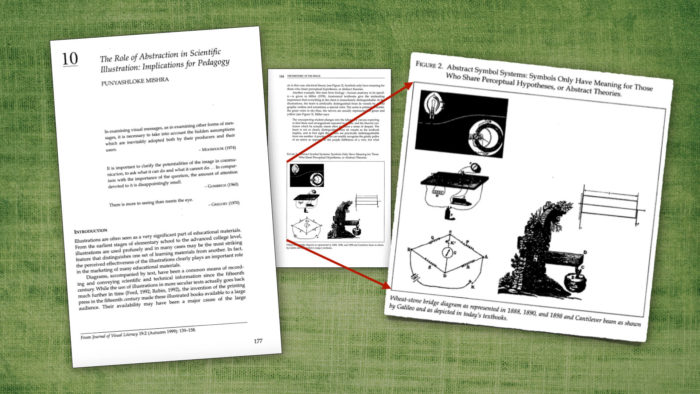
Till one evening (armed with a glass of wine) I decided to dig through my Dropbox archives. I wasn’t sure what I would find – but it was worth the effort.
Since I didn’t remember any file names the search was all over the place. And of course, I kept getting distracted by random things that would pop up – Huh… When did I make that presentation? And, did I really write this paper in grad school?
But then I came across a folder titled JVL (Journal of Visual Literacy?) and in that folder were a bunch of files and sub-folders related to the published paper. And there was a folder of images – and wonder of wonders, and one of those was the image that Dr. Marriott had been asking about.
But sadly, it was just a Jpeg image file with an uninformative title JVL-image5.jpg, and of course no references.
But now I was on a mission, opening folders and sub-folders, scrolling by docs titled finally-final, and finally-final2, more images and notes, and then… I came across a folder called Scans. And in there were the original scans in tiff format that I had then converted to Jpegs to include in the article. (Back in the day, Tiff was the hi-res file-format that was favored by flat-bed scanners.) Incidentally, Dropbox also informed me that the last time these files had been accessed was 23 years ago! Wow. They had not been touched since 1999.
It was here that I found a crucial clue—in a filename. There was a file there titled Gregory-Wheatstone-scan.tiff. Wheatstone circuits were what I was looking for and a quick peek told me that these were indeed the images I had used in the chapter.
But it was the “Gregory” in the file-name that was the important bit of information.
Gregory could only be R. L. Gregory, psychologist and visual perception researcher and author. A quick peek at the references showed me that I had cited two books by R. L. Gregory. The first was The Intelligent Eye and the other was Eye and Brain: The psychology of seeing eye.
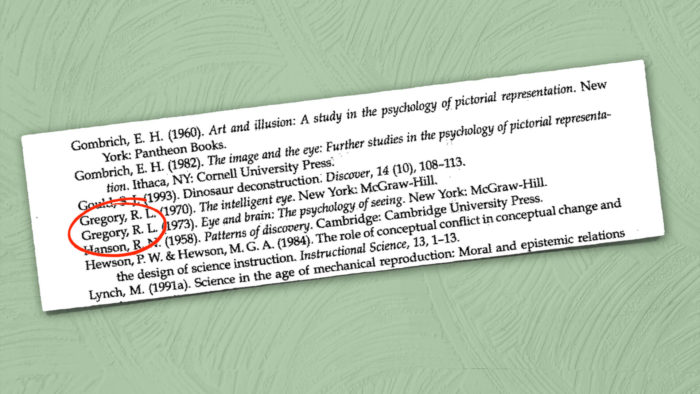
Getting my hands on the books and confirming that these images did indeed come from one of them was another matter altogether. But just for the heck of it I tried google – and less than a minute later I had found scanned pdfs of both the books at the Internet Archive.
Then it was just a matter of clicking around through the pdf’s and boom.. there they were, on three consecutive pages of the book The Intelligent Eye, the diagrams that I had been looking for.
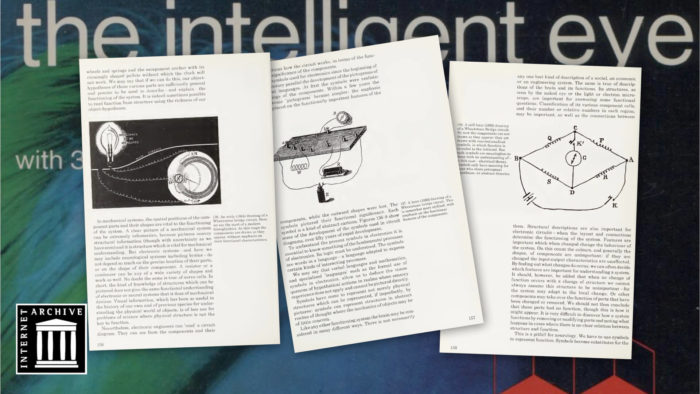
Woot!
I now had an answer to Dr. Marriott’s question. And that felt good. It was also a lovely way to spend a part of an evening – combining a glass (or two) of wine and a bit of Dropbox-diving and online sleuthing. What fun.
Most importantly though, this search took me right back to my high-school days in India and the days I had spent at the British Council Library. It was there that I had first run into Gregory’s books. Along with books by Ernst Gombrich and Bertrand Russell and more.
As I clicked through the pages of the scanned books, it was as if I was meeting old friends after not having seen them for a couple of decades. I also realized just how much the ideas in these books have influenced me and how they are so much a part of me even today. I know my journey to cognitive psychology and through that to my masters in design and getting a doctorate and becoming a professor, all came from reading authors like Gregory.
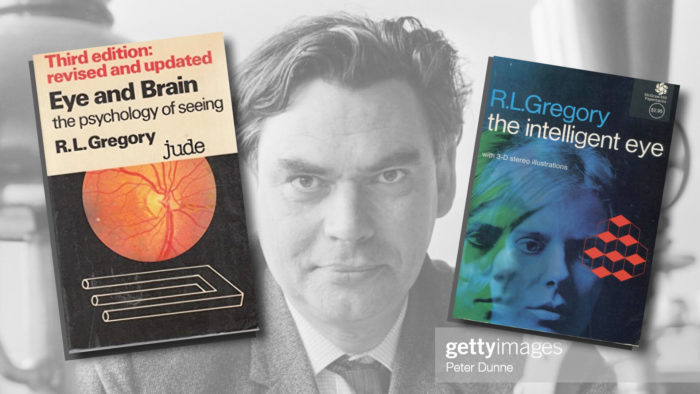
This is also where my lifelong interest in visual perception and optical illusions began. And that in turn led me to Douglas Hofstadter, and through him to Scott Kim and to my experiments with ambigrams and other forms of visual-mathematical wordplay.
It led to my creating (what I believe is) an original oscillating / impossible figure illusion (see below). And maybe most importantly, to the hours that I have spent with my kids creating illusory new year’s videos over the past 13 years!
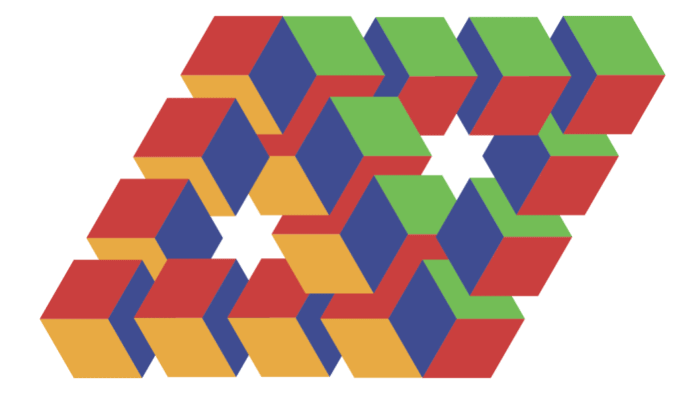
All I can say is thank you, Dr. Marriott, for opening up this space for reflection and reminiscence. None of this would have happened if you hadn’t sent that email to someone you had never met and didn’t know.
And of course, thank you, Internet!
Side note II: Gombrich’s classic Art and Illusion is mentioned in my recent blog post (Can a computer program be sentient? Or is it all in our heads? And what does all this mean for ed tech?) connecting the visual experimentation of Rodolphe Topffer, the creator of comic books, to how it helps us understand the reasons behind why we so easily perceive sentience in software.
Notes
- The original paper that Dr. Marriott mentions can be found on this site. Complete reference and link given below.
Mishra, P. (1999/2004). The role of abstraction in scientific illustration: Implications for pedagogy. Journal of Visual Literacy. 19(2), 139-158. Reprinted in C. Handa (Ed.). Visual rhetoric in a digital world: A critical sourcebook. (pp. 177-194). Boston, MA: Bedford/St. Martin’s Press.

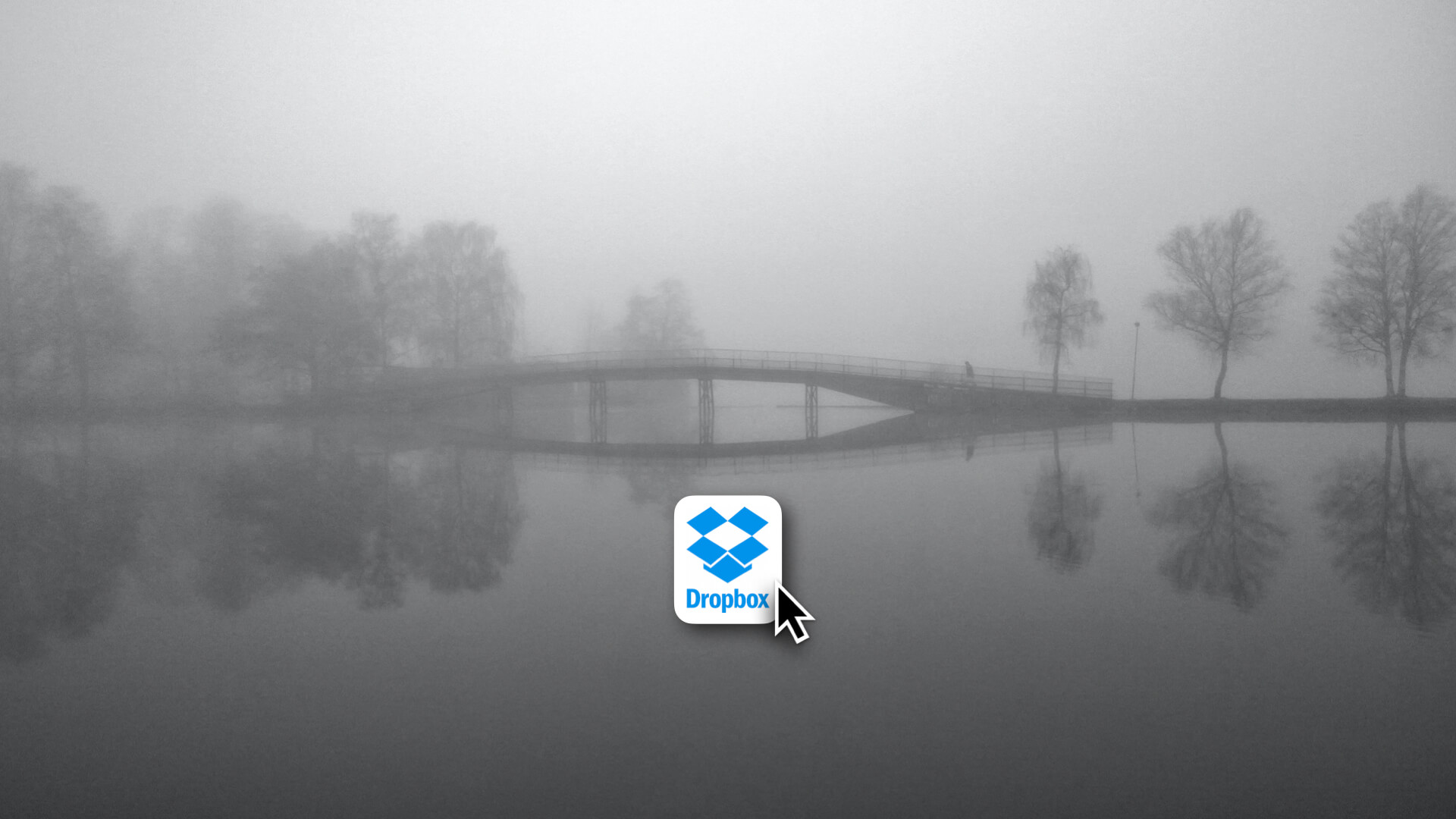

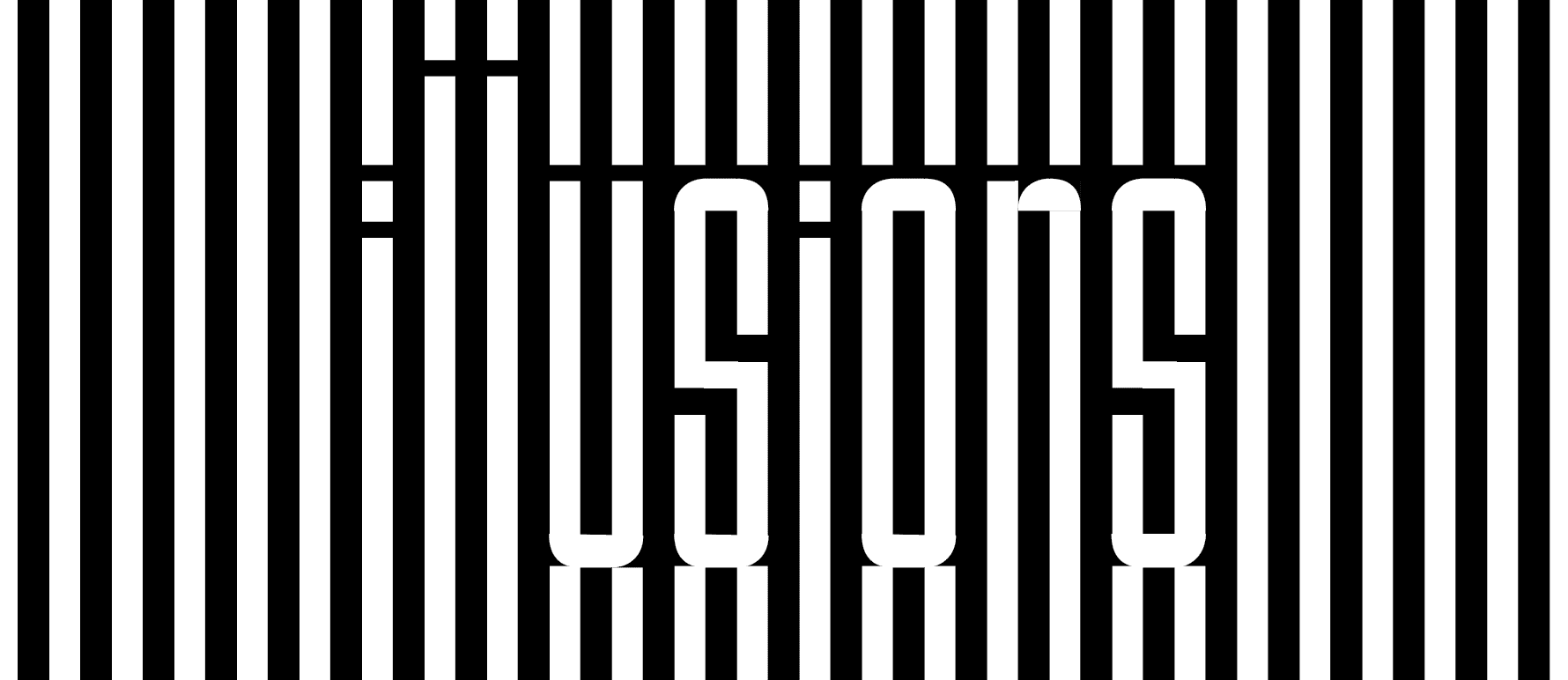
0 Comments